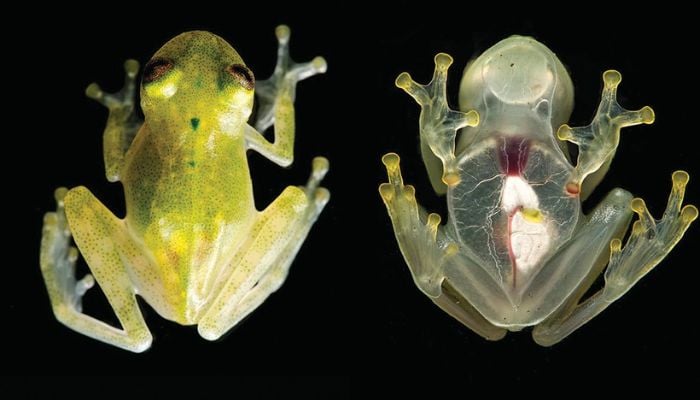

A frog that turns to a mostly translucent state when sleeping could hold the key to understanding human blood coagulation.
Although the glass frog has long been recognised by science, its method of becoming transparent was a mystery.
Now, a study published in the scientific journal Science has found that it can pool blood within its body without suffering the consequences of clotting. The research may help doctors better understand hazardous blood clotting, a deadly disorder.
In the Tropics, the glass frog, which is roughly the size of a marshmallow, spends its days dozing off on lush green foliage.
The creature disguises itself on the leaf and increases its transparency to 61% in order to avoid being noticed by predators.
"If you turn these frogs over, you could watch their heart beating by itself. You can see through the skin and see the muscle, the majority of the body cavity is really transparent," Jesse Delia, a researcher at the Museum of Natural History in New York, US told BBC News.
Now, research by Delia and Carlos Taboada at Duke University in the US has revealed how the glass frogs carry out this incredibly peculiar task.
The scientists gauged the opacity of the animals when they were awake and asleep by shining various wavelengths of light through them. The creatures' blood pools in their livers, they discovered.
"They somehow pack most of the red blood cells in the liver, so they're removed from the blood plasma. They're still circulating plasma... but they do it somehow without triggering a massive clot," Delia explained.
The animal's blood cells can clump together to an extent of up to 89%, causing the frog to turn translucent. The frog allows the red blood cells to recirculate and the liver to constrict when it wants to become active again at night to hunt or find a mate.
The frog may still coagulate blood when necessary, such as when injured, according to Taboada.
The creature's "superpower," according to him, is its capacity to selectively pool and clot blood, which may pave the way for a more comprehensive understanding of blood coagulation.
The majority of animals experience blood clotting, which can be fatal and can cause events like heart attacks in humans. However, the researchers emphasise that it might take years before this knowledge is put to use in human treatment.









 Add Category
Add Category